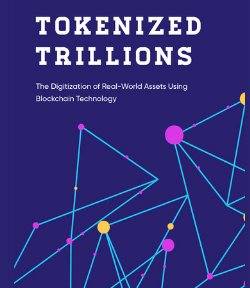
The Bitcoin Bull Run Reloaded
Rate Cuts, State Accumulation, and the End of Reputational Risk.
The Landscape Has Shifted
After years of regulatory tug-of-war, hawkish monetary policy, and geopolitical instability, Bitcoin now finds itself at the intersection of fiscal stimulus, policy reform, and strategic accumulation. A series of rapid-fire developments – from the Federal Reserve signaling rate cuts to Texas announcing a Bitcoin reserve – suggest that the narrative surrounding Bitcoin is entering a new and significantly more bullish phase.
We’re not just looking at cyclical market optimism. We’re witnessing the institutional and political integration of Bitcoin into the American economic framework.
A Rate Cut on the Horizon: Liquidity Is Coming
The clearest catalyst is monetary: the U.S. Federal Reserve is now openly entertaining the idea of rate cuts as soon as July. Governors like Michelle Bowman and Christopher Waller, both aligned with a more accommodative stance, have voiced support for bringing rates closer to their “neutral” level in light of softening economic indicators. This comes against a backdrop of slowing labor market growth, disinflationary oil trends, and diminished upside risk to consumer prices.
For Bitcoin, the implications are obvious: more liquidity, lower opportunity cost, and higher risk appetite.
Rate cuts signal a return to expansionary monetary policy – one that reduces yields on traditional safe assets and indirectly fuels the appetite for alternatives like Bitcoin. If the Fed follows through, Bitcoin could again become a preferred store of value in a world of monetary debasement.
Strategic Bitcoin Reserves: Texas Takes the Lead
The political dimension is equally significant. Texas, under new legislation, is now planning to allocate $10 million annually toward Bitcoin acquisitions. This isn’t just repurposed seizure stockpiles – it’s an active accumulation strategy. While discussions around tax neutrality continue, the intention is clear: U.S. states are no longer waiting for federal mandates. They’re staking their financial future on digital hard money.
This raises a critical question: If states can hold Bitcoin as a strategic reserve, how long before sovereign funds, municipalities, or pension systems follow suit?
More importantly, such moves validate Bitcoin’s role as a hedge – not just against inflation, but also against federal overreach and fiat uncertainty.
Reputational Risk Abolished: The Fed Quietly Opens the Gates
Perhaps the most underrated development is the Federal Reserve’s decision to officially remove “reputational risk” as a criterion in its examination of banks engaging with digital assets. While this may sound technical, its impact is monumental.
Previously, banks hesitated to engage with Bitcoin not due to fundamental risk, but due to regulatory optics. Now, without that cloud of reputational ambiguity, banks are free to assess Bitcoin on financial merit alone.
In practice, this clears the path for broader institutional participation. It won’t be long before we see regional banks offering Bitcoin custody, crypto-backed loans, or even BTC-denominated treasury products. The rails are being quietly laid for full-on banking integration.
Market Psychology: Volatility vs. Structural Bullishness
Despite this barrage of bullish signals, sentiment remains fragile. Global geopolitical tensions – whether between Israel and Iran, or the unresolved frictions in Ukraine, Taiwan, and Russia – still hover as black swan threats. But as recent market reactions show, Bitcoin is increasingly decoupling from short-term panic and responding to structural signals: liquidity, policy, and institutional demand.
The fact that Bitcoin rallied as oil and gold declined is telling. It suggests that markets are beginning to price Bitcoin as a leading indicator – not a lagging risk asset. In a world with diminished trust in institutions, Bitcoin’s decentralization becomes a feature, not a flaw.
The Game Theory Is Underway
With the reputational stigma gone, and rate cuts looming, banks are now playing a game they can’t afford to lose. The first-movers – JPMorgan, BNY Mellon, Fidelity – have already positioned themselves. Those who continue to resist may find themselves on the wrong side of history.
Bitcoin doesn’t need every bank. It only needs a few to tip the dominoes. Once the infrastructure is normalized – custody, regulation, strategic reserves – the rest will follow. Not because they believe in the ideology, but because the economics will demand it.
Bitcoin’s New Legitimacy
This isn’t a speculative phase. It’s a realignment of financial priorities. Bitcoin is no longer just a volatile asset riding on meme-fueled hype cycles. It’s being codified into U.S. fiscal strategy, rate policy, and institutional portfolios.
With interest rates set to fall, strategic reserves on the rise, and the regulatory climate warming, the market is setting the stage for a potential second leg of a Bitcoin supercycle. The window for accumulation at sub-trillion market caps may be closing faster than many realize.
The fiat system is being forced to absorb the hardest money ever created. And for Bitcoin, the implications are clear:
The bull case is no longer just narrative – it’s policy.







